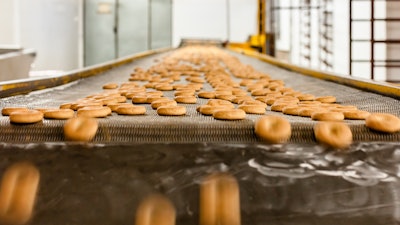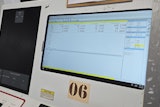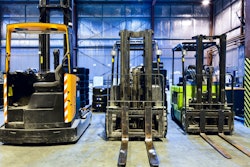
The demand for comfort food during 2020 drove up sales of sweet goods, and now that bakery cafes and restaurants are reopening in many areas, the overall bakery market is on track to grow by 4% year over year through 2024. Job openings for bakers are growing faster than average, according to the U.S. Bureau of Labor Statistics, but that doesn’t mean those jobs are getting filled.
As industrial bakeries try to meet rising demand with fewer employees, remote monitoring via wireless environmental and equipment sensors offers a solution that can help bakeries operate more efficiently, prevent unplanned downtime related to equipment problems, and manage employees and production processes more safely.
Wireless sensors are now small enough to fit in spaces the size of a matchbox, have batteries that can last for years and are designed to securely, automatically connect to a gateway that relays sensor data to the cloud for storage and analysis—and they can be installed in minutes. These characteristics make them a good fit for bakeries that seek to maintain or increase productivity without a large capital expenditure on smart equipment or a time-consuming, expensive wired-sensor installation process.
Remote sensor data can identify areas for operational efficiency gains
Wireless vibration sensors installed on equipment like ingredient handling systems, mixers, conveyors and packaging machinery can help bakery managers benchmark and improve efficiency. They do this by tracking the amplitude of the vibrations in equipment motors, compressors and pumps in real time and streaming that data to the gateway. From there, it goes to the cloud where plant managers can access it through a computer or mobile device.
When they log in, managers can use the vibration sensor data to see which machines are operating at the moment. They can also review historical data to see how long each machine ran over the previous shift, day or week. So, for example, by comparing the run time of a mixer across three shifts during the previous week, they can see which shifts were the most productive and which lagged. If there’s a consistent pattern—let’s say the third shift ran the mixer 30% less than the other two shifts—the manager can take that data to the shift lead so they can identify the source of the problem, correct it, and bring that shift’s productivity up to match the others.
There’s another way to use vibration sensor data to increase efficiency, and that’s by looking at the vibration amplitude of each piece of equipment. Motors, pumps and other mechanical items have an ideal vibration range that they should operate within. Using that range to set parameters can allow managers to generate data reports that show when and for how long pieces of equipment are operating outside their ideal range. This can help highlight issues like equipment overloading that can affect productivity and the quality of the finished goods.
Reducing unplanned bakery equipment downtime
Remote vibration sensors, especially when they’re coupled with wireless temperature sensors, can help managers respond quickly to urgent mechanical issues. For example, if the motor on a conveyor suddenly starts vibrating outside the optimal threshold and heats up quickly, shift leads and plant managers can get real-time alerts as SMS messages, voice calls or emails (or a combination of the three) so they can investigate right away and correct the problem on the spot or schedule a service call. This quick-response capability can help avoid or minimize production-line backups and quality issues caused by malfunctioning equipment.
The same data streams that alerts bakery managers to urgent problems can also, over time, create histories of how each piece of equipment functions, so managers can create historical reports and look for trends that could indicate the need for maintenance. For example, if a walk-in cooler’s compressor has been gradually vibrating more and more toward the out-of-ideal-range zone, the data may show that before there are changes in the compressor’s running sounds or the temperature inside the cooler. With this information, managers can schedule maintenance on the compressor at the least disruptive time and avoid equipment failure that could jeopardize the safety of stored ingredients or finished goods.
Remote monitoring for safety and higher productivity
In addition to protecting equipment and highlighting areas for efficiency gains, remote sensors can also help bakeries to protect their workers, ensure safety compliance standards and free employees from compliance-related recordkeeping.
The same gateway that receives data from vibration and temperature sensors on equipment can also connect to wireless temperature sensors inside coolers and freezers. Those sensors can report temperatures every few minutes, generating a reliable, consistent log for food safety standards that can easily be formatted to meet reporting requirements. This saves valuable employee time on manual temperature checks and data entry, so they can focus on higher-value tasks.
Other types of sensors can operate on the same network to enhance safety. For example, door and window sensors can generate alerts to managers or security personnel if there’s activity in an area or at a time when no one should be going in or out of a particular entrance. (Door monitors can also be attached to coolers, freezers and proofers and set to send alerts when doors are left open for too long.) Pairing perimeter door and window monitors with wireless cameras can help security staffers keep track of what’s happening around the plant from a single location and help them prioritize and plan responses to alerts.
Meeting demand more efficiently
The opportunity for growth over the next few years is clear, if bakeries can clear the hurdles to achieving it. Wireless sensor networks can help them work more efficiently, maintain product and employee safety, reduce unplanned downtime and meet rising demand even when workers are hard to find.
 Almgren
Almgren























